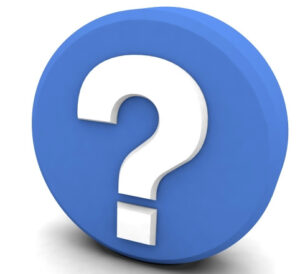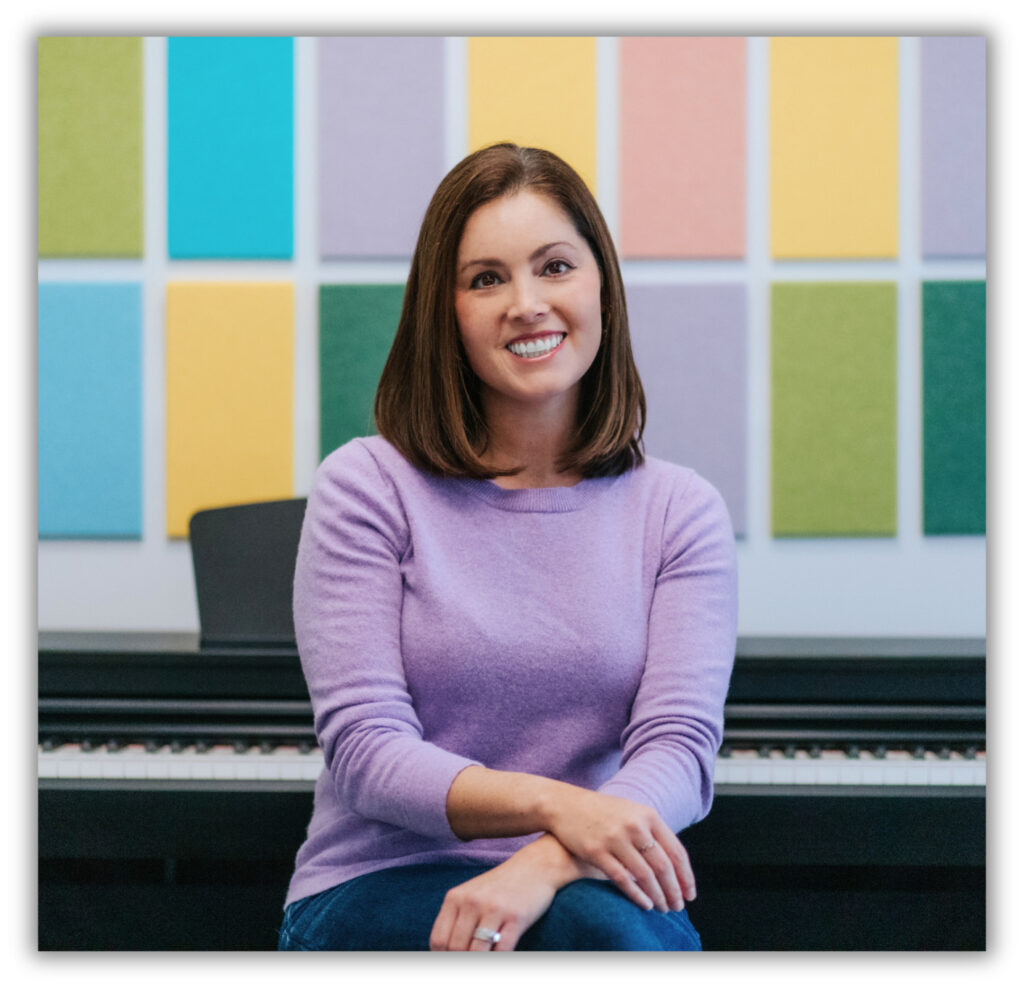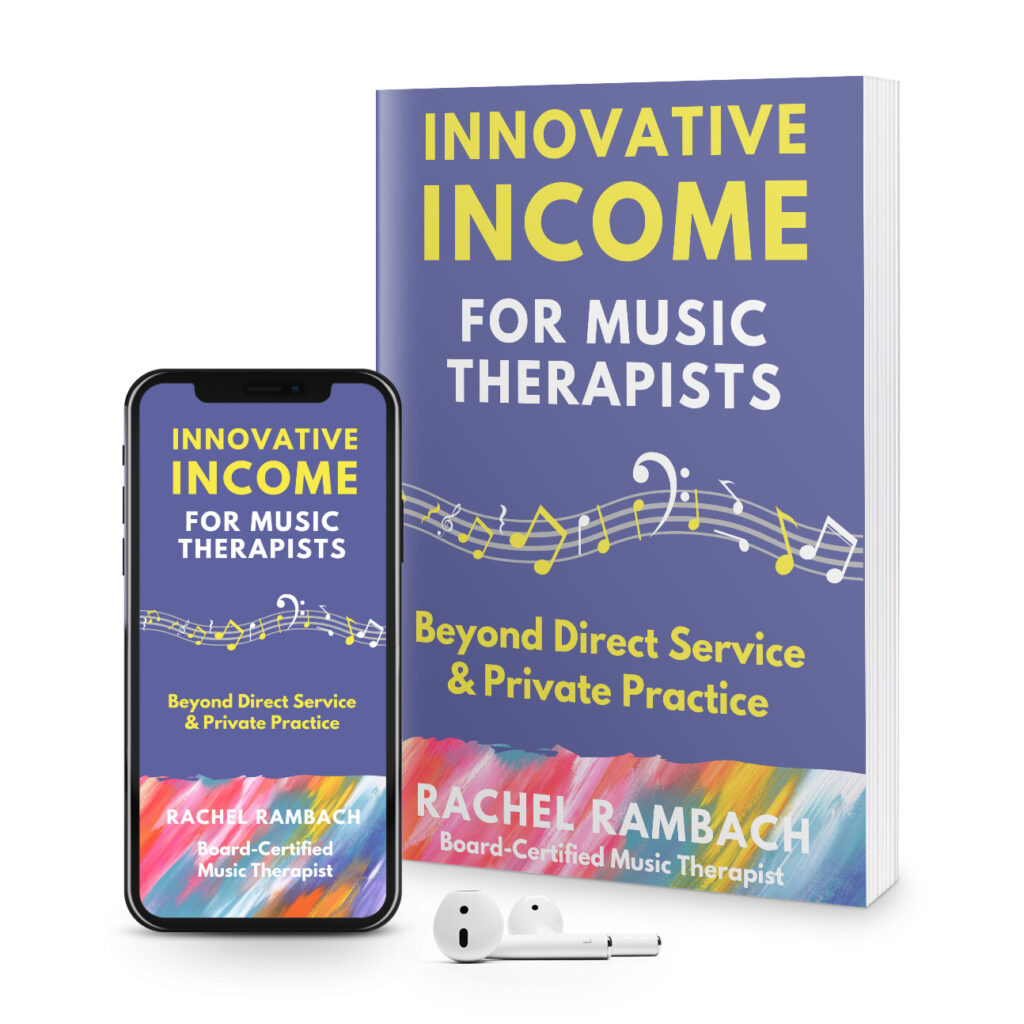by Rachel | Uncategorized

Want to read Part 2 of my “Adventures in Songwriting” series? Well then you’ll have to scoot on over to Wade Richards’ blog, Time for Music! There you can read all about the process I use to write my songs — and check out all of Wade’s great articles and music therapy resources.
So what are you still doing here? Go read Adventures in Songwriting: My Process and feel free to share the process that works best for you. Oh, and if you missed Part 1, you can find it here.
by Rachel | Uncategorized

When people find out that I write my own music therapy songs, they usually have lots of questions. How did you start writing songs? Is it hard? Do you prefer using your own songs to others’ songs?
These questions came up again last week during a presentation for speech & language pathologists, and I made a note right then and there to share my thoughts here on the blog. So here it is: my “Adventures in Songwriting” series, starting at the very beginning (a very good place to start, if you ask Julie Andrews).
When I started my first practicum as a new music therapy graduate student, the first place I went for help was the internet. I’d never written a song in my life, and had no idea where to start. I was to work with seniors in a nursing home, so I typed “music therapy hello songs for seniors” into Google. Can you guess how many results that yielded? Yep…not many.
That was the moment I realized I was going to have to start writing my own songs. I started with a simple hello song, which ended up taking less time than learning an existing song would have. It wasn’t great, but I used it throughout that entire first practicum. Everyone seemed to enjoy it, and what amazed me most was that by the end of the semester, the whole room was singing along. To a song I wrote. It was a pretty cool feeling.
Even with a few successful songwriting experiences under my belt, I still didn’t feel 100% confident as a songwriter. I continued to rely on Google to lead me to songs I could use in music therapy practicum sessions. But the more specific the goals and objectives for my clients, the harder it was to find the right song that fit each unique situation.
It wasn’t until beginning my internship that I began to feel comfortable sharing my songs with people other than my clients. The positive feedback I received from my supervisors definitely helped, as did the fact that my clients were making progress because of the songs I was writing just for their needs. Not to mention that the more I wrote, the easier it got. Isn’t that the case with so many things in life?
In my next installment of this series, I’ll talk about the actual process I use to write my songs. In the meantime, if you have any songwriting questions you’d like for me to answer, please leave them in the comments!
by Rachel | Uncategorized

When I revealed my blogging goal of 365 posts in 2011, I received an influx of topic requests. A suggestion that came up more than once: how do you put yourself out there in the music therapy world upon graduating?
Being a new graduate is scary and overwhelming. But it’s those feelings of excitement and hope and promise that will push you in the right direction, whatever that may be for you.
I know, because I was there a mere 4 years ago. I had already finished my undergraduate degree in vocal performance, but music therapy was a whole new world (picture me as Jasmine flying through the air on a magic carpet). As I neared the midpoint of my nine-month internship, it hit me that I was on my own pretty soon.
So I told everyone I knew and everybody I met that I was going to be a professional music therapist soon. I talked to nursing home administrators, who offered for me to come visit and share music experiences with their residents. I emailed former teachers and principals, hoping they would have leads for me. I chatted up the manager at my local music store, where I had previously taught voice lessons. I spread the word at my church, where I was already on the children’s music staff.
And then in January, five months before I was to officially graduate with a masters degree in music therapy, I received an email from the principal of a school for children with disabilities. He’d heard through the grapevine that I was returning to Springfield soon, and was wondering…would I be interested in applying for the full-time music therapist position they’d just received a grant to fund?
Now I will admit that my story sounds like something out of a fairy tale, where full-time music therapy positions grow on trees and sunshine and rainbows fill the sky. But I have no doubt that the networking I did prior to receiving that email led to where I am now.
And it didn’t stop there. I got that full-time job, but I also continued to get phone calls from other people and places. A mom of a child with down syndrome, wanting to form a music therapy group for other families like hers. The Autism Program, wanting to offer music therapy services in the summer. Referral after referral for private adapted lessons, sent by the music store manager.
We always hear how important networking is in any career, but it’s even more so in a field as unique as music therapy. People remember you once they hear your story, what you do (or want to do) for a living.
Music therapists sometimes have to create their own jobs. And that’s okay. Scary, but wonderful and exciting and sky’s the limit. Our field has evolved in the short time that I’ve been in it, and it will continue to grow and expand and provide more opportunities for creative work. (You’re looking at one of them, right here on this blog.)
Now what stories and pearls of wisdom can you share with new professionals who are asking the question, “I graduated…now what?’
by Rachel | Uncategorized
 Last week, I started a new feature on the blog called Ask Listen & Learn (follow the link to read the first installment, in which I answer a question regarding songs that aren’t for teaching). I have a new question from a reader to share with you all today. She writes:
Last week, I started a new feature on the blog called Ask Listen & Learn (follow the link to read the first installment, in which I answer a question regarding songs that aren’t for teaching). I have a new question from a reader to share with you all today. She writes:
I have an adult patient who loves Move Your Body Along, but I try to rock it up a big (because my patient is 30). No offense, but the original version of the song might be a little immature for his age. Could you give tips on modifying songs for the age of your patient?
This is a great question. I am constantly adapting and rewriting my own songs for my music therapy clients, not only to fit their unique needs but also to ensure that they are age-appropriate. I’ve cringed on more than one occasion when I’ve seen music teachers, or even other therapists, since “Old McDonald”, “Row Your Boat” and other preschool-level songs with teenagers and even adults with developmental delays. The fact is, just because a 30-year-old may have the cognitive capabilities of a 3-year-old, that doesn’t mean a nursery rhyme is appropriate for that individual. There are plenty of other options.
I work with over 100 students, aged 7-22, at my school. Functioning levels range greatly from class to class, and even within the four walls of one classroom. So I am always thinking on my feet, changing up words, lyrics, and beats to best serve my students in respect to their age and skill level. Here are a few pieces of advice for doing so based on my own experience:
- Let your student/patient make the song his or her own. This takes some of the pressure off of you (!) while allowing an opportunity for that student/patient to flex his or her creative muscles. Using the song example my reader gave, I open the floor to my students when we sing Move Your Body Along. They always come up with way better movement ideas than I do, anyway :) Present a song as-is, but then turn it into a songwriting activity so that the student/patient has control over the subject matter and actual lyrics.
- Give the song a beat. If you use a Mac, set up Garageband so that you can play a loop or beat while you sing with your student/patient. Better yet, let him/her choose the loop or beat. You’d be surprised at just how much this can punch up a song. Plus, adding technology to any activity will make it more appealing to older students/patients.
- Make the song an interactive experience. If your students/clients can communicate verbally, use a song merely as a conversation starter. I do this all the time with songs like Off to School Today, where it serves as a jumping off point to share ideas about the topic at hand. Sing a verse, let them share. Sing another verse, let them share some more. It’s fun to see where the conversation goes.
Of course, it is important to keep in mind that not every single song out there (even those in my collection) are suitable for older students and patients, no matter how you adapt it. So if you just can’t find a way to make a particular song work in a given situation, save it for another time and move along to the next one.
If you have a question you’d like for me to answer here at Listen & Learn, simply send me an email (and be sure to include that you’d like it shared on the blog).
by Rachel | Uncategorized
 I get lots of email from Listen & Learn readers. I try to answer each and every question that lands in my inbox, which sometimes takes me hours at a time. So instead of writing the same responses over and over, I thought it might be beneficial to share reader questions and my answers right here for everyone. The first question in my “Ask Listen & Learn” series is as follows:
I get lots of email from Listen & Learn readers. I try to answer each and every question that lands in my inbox, which sometimes takes me hours at a time. So instead of writing the same responses over and over, I thought it might be beneficial to share reader questions and my answers right here for everyone. The first question in my “Ask Listen & Learn” series is as follows:
The children I work with are hospice patients. Our goals center on bonding between mom and patient (not that they have problems bonding, it’s more creating memories) and getting a response from the patient. My patient’s response is declining, due to diagnosis, but the patient still responds to music more so than to other stimulation. AND the patient still communicates…will smile to show pleasure, and pouts when upset — will seriously pout by sticking out lower lip when we give the little sibling too much attention during session (it’s pretty cute) and will also turn head away and roll eyes if doesn’t like something (also very cute). I guess my request is for music that is less teaching a skill and more geared towards significantly lower functioning kids.
As a music therapist who works primarily with children in an educational setting, it is easy for me to get tunnel vision as I write my songs — so many of them do tend to “teach” a skill or concept. However, because many of my students are significantly lower functioning, I often adapt the majority of my songs to suit their abilities.
This being said, I am well aware that as busy therapists, parents and teachers, we don’t always have time to rewrite lyrics to existing songs in order to make them suitable for our own children and students. Here are a few Listen & Learn songs that may be appropriate as-is for this particular reader’s patient:
- The Feelings in My Heart: This reader actually cited this particular song as one that was effective, so I’m sharing it more for everyone else’s sake. It doesn’t necessarily require a response from the child, but if he/she is capable of facial expressions, then the child can respond non-verbally.
- Patrick & Polly Pumpkin: I thought I’d throw in a seasonal song here, too. This song doesn’t require any response at all, but it has a nice theme — friendship and feeling loved.
- On the Disney Channel: Even some of my lowest functioning students, those for whom most skill-based songs are too advanced, light up when I sing this one. The characters and shows are familiar and fun, and the song itself is just for enjoyment.
Another option for this patient is a singable story. This is something that not only you, the therapist, can do with the patient, but it is also an activity the parent and child can share on their own later. My personal favorite is The Story of My Feelings, by Laurie Berkner.
If you have a question you’d like for me to answer here at Listen & Learn, simply send me an email (and be sure to include that you’d like it shared on the blog). I would love for Ask Listen & Learn to become a regular feature!





 I get lots of email from Listen & Learn readers. I try to answer each and every question that lands in my inbox, which sometimes takes me hours at a time. So instead of writing the same responses over and over, I thought it might be beneficial to share reader questions and my answers right here for everyone. The first question in my “Ask Listen & Learn” series is as follows:
I get lots of email from Listen & Learn readers. I try to answer each and every question that lands in my inbox, which sometimes takes me hours at a time. So instead of writing the same responses over and over, I thought it might be beneficial to share reader questions and my answers right here for everyone. The first question in my “Ask Listen & Learn” series is as follows:

